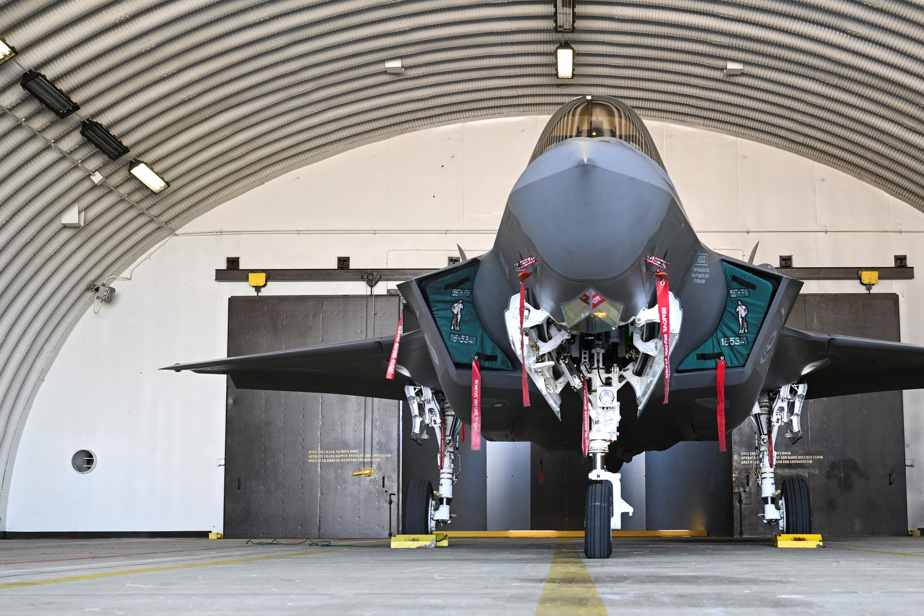There will be a lot of leeway in calculating the economic spinoffs resulting from Ottawa’s purchase of 88 F-35 fighter jets for $19 billion. According to a government presentation consulted by The Pressthe agreements between Canada and the manufacturers of combat aircraft are “non-contractual”, and therefore not governed by a contract.
This information appears in the summary of an “information session” which took place on June 5th. It specifies in particular that the agreement with Lockheed Martin as well as Pratt & Whitney is “not contractual”, but that one “expects the main contractors to achieve the industrial objectives”.
Since formalizing its order last January for 88 fighters to replace the aging CF-18s, the Trudeau government has been repeating that the economic benefits to the country will be equivalent to the value of the contract. However, several questions remain unanswered.
“Objectives will be achieved within reasonable commercial efforts and contracts will be awarded to Canadian industry on the basis of best value for money,” reads the 60-page document.
This kind of commitment remains unclear for many players in the aerospace industry, which is concentrated in Quebec. Since the beginning of the year, we have wondered, for example, where the F-35 repair shop will be located and who will train the pilots who will sit at the controls of the fighters.
Several industry sources, who wish not to be identified for fear of trade retaliation, have complained to The Press the absence of guidelines established by the Trudeau government in terms of economic benefits.
“I don’t see a coordinated strategy with the industry to go and make requests,” explains one of them. We do not see much political will at the moment. »
Different
The agreements concluded with Lockheed Martin as well as Pratt & Whitney mark a break with the usual ways of doing things. They are not subject to the Industrial and Technological Benefits (ITB) Policy, which imposes requirements on companies as well as a method for calculating the impact of benefits. As for the F-35, we don’t yet know how it will all work out.
“As part of the agreement, the F-35 supplier team will be required to provide an annual report on the progress made against its economic benefits obligations,” said Laurie Bouchard, director of communications for the Minister of Innovation, Science and Industry, François-Philippe Champagne.
According to the latter, other announcements will eventually be made about the maintenance of these modern devices as well as the training of pilots. According to the document that The Press consulted, the manufacturers of the F-35 say they have concluded agreements in excess of 2.7 billion US dollars with Canadian industry since work on the program began.
Across the country, there are “36 active entrepreneurs” who participate directly or indirectly. In Quebec, the landing gear and aeronautical components specialist Héroux-Devtek manufactures door locking systems for the landing gear of combat aircraft. Lockheed Martin argues that the more F-35s sold around the world, the more revenue suppliers will generate from the fleet in service around the world. The United States, United Kingdom, Germany, Italy and Australia operate or have committed to purchase the military fighter.
Contracts, but which ones?
Richard Shimooka, a researcher at the Macdonald-Laurier Canadian Institute, who specializes in particular in defense issues, expects the F-35 to generate benefits in the country. The problem is that the laws of the market will decide the winners. Agreements will therefore not be guaranteed in advance and sprinkled throughout the industry. They therefore risk being shared across the companies that will be selected.
There is a risk. If you win one of the contracts, the benefits will likely be higher than if it had been obtained through the Industrial and Technological Benefits Policy. What we’re saying with the F-35 is that we’re not going to give you money automatically.
Richard Shimooka, researcher at the Macdonald-Laurier Canadian Institute
In the CF-18 replacement saga, Lockheed Martin’s only competitor was Saab, the manufacturer of the Gripen. The Swedish multinational had offered firmer prior guarantees in terms of economic benefits. Among other things, it promised the creation of 6,000 jobs that would be maintained throughout the 40-year life cycle of the fleet.
Quebec would have obtained half of these new jobs.
“We remain the only bidder that has committed to having Canadians build, maintain and modernize the fighter fleet in the country, giving Canada ownership and control of these major defense assets,” said Patrick Palmer, Executive Vice President of Saab Canada.
He also said Saab is committed to establishing the Gripen Center, the main fighter support and upgrade center, in the Montreal area. Saab also planned to create several research and development centers, including an aerospace R&D center in Quebec that would be an incubator for new technologies in aerospace innovation.
Learn more
-
- 16
- Number of F-35 aircraft to be delivered to Canada by 2028
Source: Government of Canada
-
- 2032
- Year in which Lockheed Martin is expected to have completed deliveries
Soucre: Government of Canada
